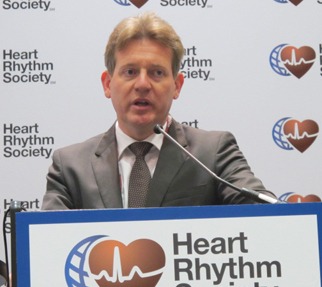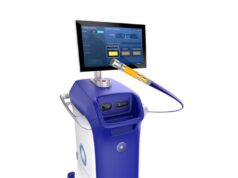
Advanced atrial fibrillation treatment can be challenging, with pulmonary vein isolation alone usually insufficient. A team of researchers from Amsterdam, Netherlands, investigated ganglion plexus ablation added to a thorascoscopic ablation strategy as a potentially attractive treatment solution for patients exhibiting long atrial fibrillation duration, enlarged left atria or previously failed ablation. Presenting their results at the 37th Heart Rhythm Society Scientific Sessions (HRS; 4–7 May, San Francisco, USA), the researchers found, however, no clinical benefits associated with this treatment, and significantly more complications.
The AFACT (Atrial fibrillation and autonomic modulation via thoracoscopic surgery) trial, presented at a late-breaking clinical trial session by Joris R de Groot (Academic Medical Center, Amsterdam, The Netherlands) hypothesised that ganglion plexus ablation during thoracoscopic surgery for atrial fibrillation-in addition to pulmonary vein isolation and additional left atrial lines-might result in “a higher percentage freedom of atrial fibrillation at one year”. Furthermore, this might be achieved “without inducing more peri-procedural or late complications.” The randomised trial is the largest to date studying thoracoscopic surgery for the treatment of advanced atrial fibrillation.
Two-hundred and forty participants (median age 60±8 years, 73% men, atrial fibrillation duration 5.7±5.1 years, 59% with persistent atrial fibrillation) underwent totally thoracoscopic pulmonary vein isolation (using the Atricure platform) for paroxysmal atrial fibrillation, or isolation plus Dallas lesion set for persistent atrial fibrillation. Randomised 1:1 for ganglionic plexus ablation, four major ganglionic plexus were ablated, as well as the ligament of Marshall in the ganglionic plexus group (n=117). Quarterly electrocardiograms and 24-hour Holters were performed for one year of follow-up, and additional rhythm recordings taken when symptomatic. Three months post operation, treatment by antiarrhythmic drugs was ceased in all patients. Recurrence was denoted by the presentation of arrhythmia lasting for more than 30 seconds, after this three-month blanking period.
Across the ganglionic plexus group, 70.9% of patients exhibited freedom from atrial fibrillation recurrence after one year and a single procedure, versus 68.4% of patients in the control group. One-year freedom from recurrence was higher in both groups among paroxysmal atrial fibrillation patients (80% ganglionic plexus vs. 74.5% control) than amongst persistent atrial fibrillation patients (65.7% ganglionic plexus vs. 62.9% control). De Groot highlighted that atrial fibrillation occurred in 34.5% of ganglionic plexus patients and 29.3% of control group participants during the three-month blanking period, where cardioversion was performed in 25 and 28 of the ganglionic plexus and control group patients, respectively. Outside of this time frame, 22 ganglionic plexus and 21 control group participants underwent cardioversion. Significantly more recurrences constituted atrial tachycardia in the ganglionic plexus group (78.1%) than in the control group (51.4%, p=0.026).
De Groot noted that more than double the number of major procedure-related adverse events was observed in the ganglionic plexus group compared with the control group. During the procedures, nine patients experienced major bleeding, all in the ganglionic plexus group. Eight of these patients were treated thoracoscopically, while one was treated by a sternotomy.
Twelve of the ganglionic plexus participants (10%, p=0.038) suffered from sinus node dysfunction, “necessitating three pacemaker implantations during admission, and three during follow-up” (5%, p=0.013), the authors noted. In contrast, significant sinus node dysfunction presented in only four members of the control group, none of whom required a pacemaker implantation.
De Groot commented that “ganglionic plexus ablation is associated with significantly more periprocedural major bleeding, sinus node dysfunction and pacemaker outcome, but not with improved rhythm outcome,” and concluded that routine ganglionic plexus ablation offers “no clinical benefit” in this patient category, and “should not be performed”.









